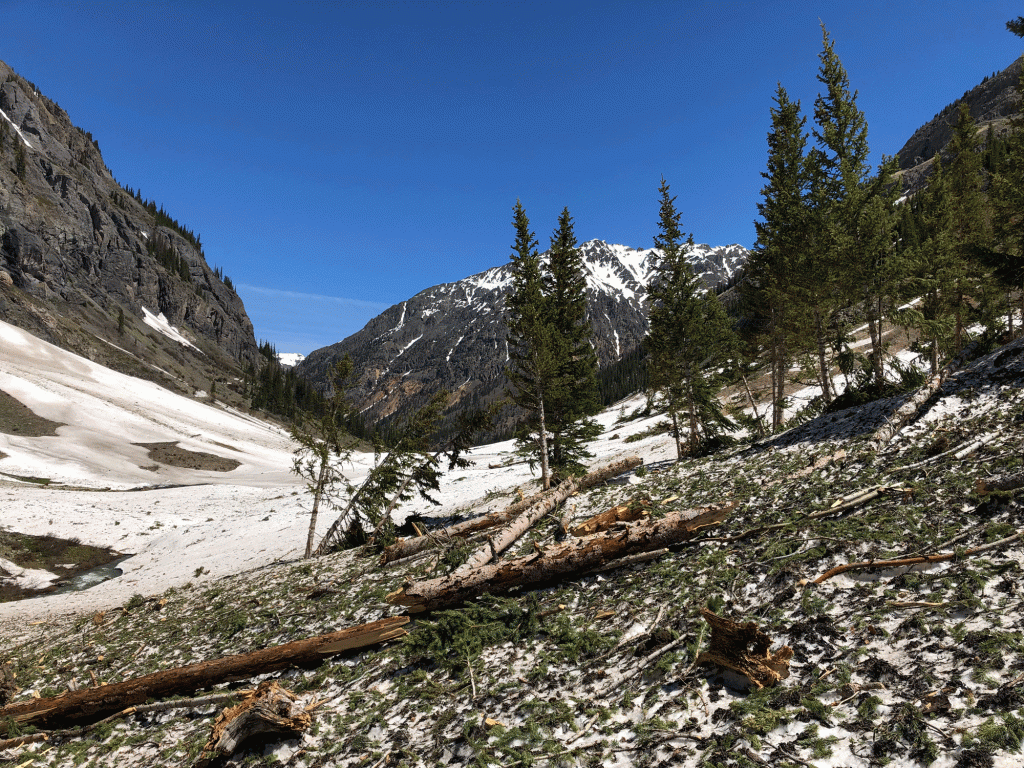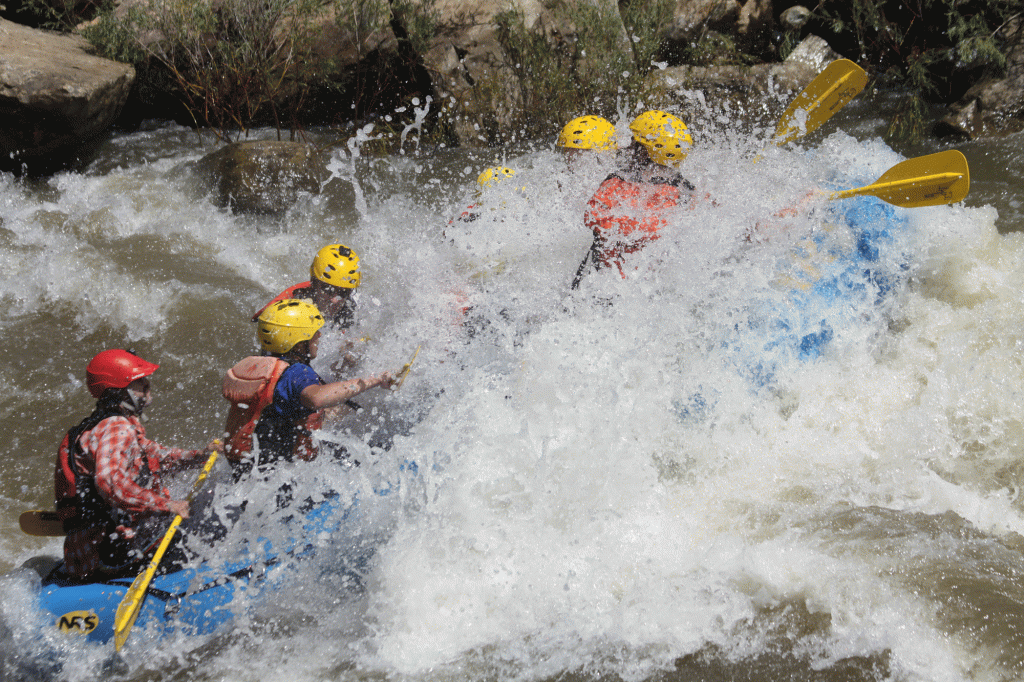At least two mountain ultrarunning events, including June’s San Juan Solstice 50 Mile Run and July’s Hardrock Hundred Endurance Run, have been canceled in Colorado this summer due to a historic winter season. For good reason: Storms producing wet, dense snow and a cold spring set the conditions for snowpack to linger, especially at high elevations across the state.
On June 24, just two days after the San Juan Solstice race was originally scheduled to place, the state’s snowpack was 4,121 percent above normal compared with the 30-year average for the day, according to the Department of Agriculture. Until May, the state hadn’t been drought-free in at least 17 years, since the National Oceanic and Atmospheric Administration (NOAA) co-launched the North American Drought Monitor to track periods of prolonged dryness in 2002. (Prior to 2000, the state’s drought records, which reach back to the late 1800s, are inconsistent.)
High-mountain snowpack and spring weather conditions play a role in year-round outdoor recreation. For skiers and snowboarders, this year’s snowfall provided access to mountaineering lines and extended lift operations for at least six ski resorts into May and beyond. For paddlers, the whitewater season could stretch through Labor Day, unless there’s a heat spike. The water flow is predicted to be high all summer, which bodes well for the rafting industry, noted David Costlow, executive director of the Colorado River Outfitters Association.
“Bookings were down a bit in May and June—people don’t call to go rafting when it’s cold and snowy. The advantage is, the melt level was kept down. Some of the rivers will probably peak the first week of July, whereas they would have peaked around June 5 in prior years,” he said.
On the other hand, for some paddlers, peak baggers, and mountain bikers the rapids, trails and backcountry might be too technical, debris-ridden or muddy for access. For others, there’s a huge disappointment when annual events are postponed.
In the 27 years since the Hardrock Hundred Endurance Run was founded, the event has only been canceled three times, twice for high snow levels and once for fire danger, said Dale Garland, co-founder and race director.
“To make this call was hard on us and really disappointing. People have waited years, in some cases, to run Hardrock. But when you look at the runner and volunteer safety, it was evident that was the correct decision to make,” Garland said. The 100-mile ultramarathon moves through the San Juan Range at an average altitude of 11,000-plus feet. Racers cross thirteen mountain passes that are higher than 12,000 feet, and some snow on the course is normal. But by June, only three of the race’s 15 aid stations were accessible due to the late spring snowfall and an avalanche cycle that filled slopes with dangerous piles of debris.
“The avalanche damage that happened this winter was incredible … The quality and quantity of avalanches was off the charts,” said Bryon Powell, a Silverton local and the editor-in-chief of iRunFar, who was selected via Hardrock’s lottery system to participate in this year’s race.
At the end of May, Powell took a winter run to Cunningham Gulch, which overlaps with the Hardrock course and is two miles from a course aid station location, and he estimated that about 70 percent of the gulch was full of avalanche debris. On his run, Powell observed and filmed an avalanche across the valley:
A May 29, 2019 avalanche in Cunningham Gulch, Colorado. (Video Credit: Bryon Powell)
“As time goes on, different dangers from the same historic winter keep popping up. There’s flooding and avalanche debris. Hinsdale County and the Lake City area, where the Hardrock course goes, was in a state of emergency for more than two months, and there’s still snow in high-country,” he said.
One of the most notable factors was the snow water equivalent (SWE)—the amount of water contained within the snowpack, which was higher than what the Hardrock’s organizers deem safe for river crossings.
Snowpack telemetry (SNOTEL) sites measure SWE across the state. “Around the first week of April, every single site in the San Juan Mountains was in the top five of all time. … Those 15 to 20 sites sit at a range of 9,500 to 11,500 feet in the mountains,” said Michael Charnick, a meteorologist at the National Weather Service in Grand Junction.But he cautioned: “You have to take this data with a grain of salt. … The higher you are in the mountains, the temperatures are cooler on average and the snow can last longer.”
Ian Billick, executive director of the Rocky Mountain Biological Laboratory (RMBL), saw a similar trend in the Elk Mountains, north of the San Juans. The lab is a world-renowned, high-altitude research destination where global scientists work on climate change studies.
“What was extremely unique about this winter was that we saw a much wetter, denser snowpack, which has more water content and melts slower,” he said. The RMBL records show the water content in the snow jumped from an average of 6.45 percent between 1975 and 2015, to 8 percent beginning in the winter of 2016.
Overall, snowfall in the Elk Mountains was actually lower than average this year, according to records taken by RMBL scientist billy barr (who prefers non-capitalized identification). He’s tracked snow intel since 1974. This winter saw 381 inches of snowfall in the Elks, while the average winter snowfall is higher—419 inches. The largest winter on record was 646 inches, in 1994.

iRunFar Editor-in-Chief Bryon Powell observed avalanche debris on a trail run in Cunningham Gulch, outside of Silverton, Colorado, the morning of June 9: This spot would have been mile 9 of the 2019 Hardrock 100 race course. (Photo Credit: Bryon Powell)
The variability in weather patterns is causing research institutions to investigate climate trends. Last year, the University of Colorado (CU) teamed up with 12 other North American research universities, all part of the University Climate Change Coalition (UC3), which has a collaborative mission to accelerate climate-related solutions.
At CU, Assistant Professor Ben Livneh teaches civil, environmental, and architectural engineering. He’s also a fellow of the Cooperative Institute for Research in Environmental Sciences (CIRES), a partnership between CU and NOAA. Livneh’s research examines how climate change and land cover change affects water availability.
“When we think about climate change, there are a lot of question marks, especially in our region, because we are far away from the ocean: Oceans are a stable surface, whereas the land tends to fluctuate a lot more. … Models are predicting that it will get hotter and drier in the Southwest. This year was really different than that,” he said.
Recently, Livneh and other global and regional researchers convened for a climate change workshop, hosted by NOAA to discuss the drought of the Upper Colorado River Basin. The two-day event proved there’s a divergence of opinion among experts regarding the effects of climate change. Overall, it’s difficult to confirm that climate change is connected to this winter’s conditions.
“When we consider climate change, we know fairly reliably that temperatures will get warmer. And we have seen a lot of warming and wetting in historical references,” Livneh said. “But this year was cool and wet—we don’t know much about precipitation. … Will we be warmer and wetter, [in the future]? He doesn’t know of a specialist who has analyzed this year’s climate trends, yet.

Raft guide Matt Shield guides his boat through late-season, high-flowing whitewater on Colorado’s Arkansas River in Bighorn Sheep Canyon. Here, the river is flowing at 4,600 CFS on July 3, 2019. (Photo Credit: Doug Valentine)
Meanwhile, recreationists are finding the silver lining to the heavy snowpack. Abby Leeper, communications manager for the Colorado Tourism Office, said skiing, snowboarding, snowmobiling, SUPing, boating, kayaking and rafting are providing excellent opportunities for outdoor adventure.
Take full advantage: The last time the Dolores River experienced a full commercial season was in 2007, followed by a short season in 2017, according to David Costlow, executive director of the Colorado River Outfitters Association, and Leeper. And Medano Creek, located in the Great Sand Dunes National Park and Preserve, has a higher flow than normal, which allows water lovers to boogie board.
To confirm regional conditions, such as trail closures and water levels, the Colorado Tourism Office recommends that travelers contact local ranger stations, check national forest websites, and reach out to Colorado Welcome Centers. Folks can also reach a Colorado Tourism representative with questions at 1-800-COLORADO.
